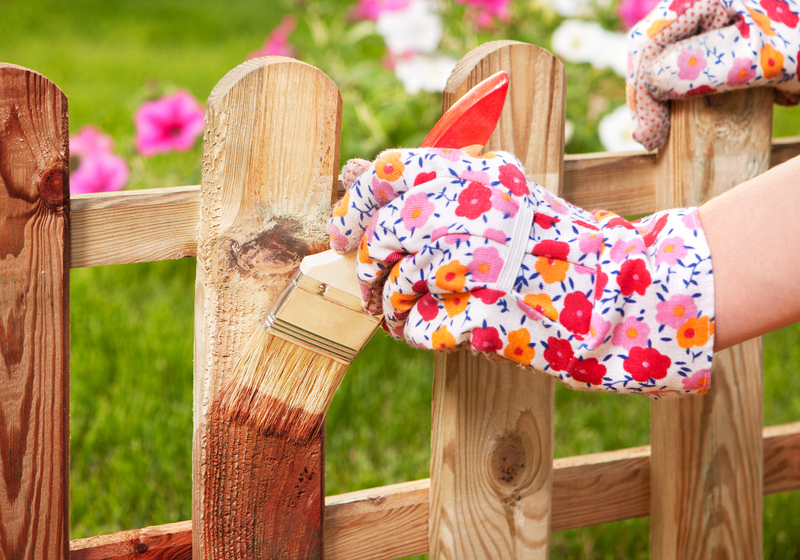Caring for Orchids: Tips for Enthusiasts
Posted on 22/08/2025
Caring for Orchids: Tips for Enthusiasts
Orchids are among the world's most captivating flowers, celebrated for their stunning beauty and diversity. But for many orchid enthusiasts, keeping these gorgeous plants happy and healthy can be a delicate balancing act. Whether you're just beginning your journey into the world of orchid care or are looking to elevate your skills, this comprehensive guide will share expert tips for growing, nurturing, and maintaining orchids indoors and outdoors. Read on to discover everything you need to know about

Understanding Orchids: A Brief Overview
Orchids (family: Orchidaceae) encompass over 25,000 species and more than 100,000 hybrids. These extraordinary plants inhabit almost every continent, adapting to diverse climates and growing conditions. Their popularity with plant lovers is matched by their reputation for being somewhat demanding houseplants. However, with the right information and a bit of patience, orchid care can be both straightforward and immensely rewarding.
Why Are Orchids So Popular?
- Dazzling Blooms: Orchids produce intricate, long-lasting flowers in numerous shapes and colors.
- Longevity: With proper care, some orchid species can live for decades and bloom repeatedly.
- Variety: The vast array of orchid types ensures an option for every skill level and taste.
Top Orchid Varieties for Home Growers
Although there are thousands of orchid species, a few stand out for their suitability for home cultivation. When discussing orchid maintenance, knowing your variety is crucial. Here are some of the most popular orchids you'll encounter:
- Phalaenopsis (Moth Orchid): Ideal for beginners, known for its resilience and stunning blossoms.
- Cattleya: Famed for large, fragrant flowers and a range of color options.
- Dendrobium: Available in abundant varieties, many suitable for indoor environments.
- Oncidium (Dancing Lady): Delicate, profuse flowers; requires bright, filtered light.
- Vanda: Spectacular blooms; ideally suited to experienced growers with ample light and humidity.
Essentials of Orchid Care
To master orchid plant care, enthusiasts must pay close attention to several fundamental requirements. Let's explore these key factors:
1. Light Requirements for Healthy Orchids
Orchids typically need lots of bright, indirect sunlight. Placing orchids near an east- or south-facing window often yields the best results. If natural light is limited, consider a dedicated grow light.
- Phalaenopsis: Prefers moderate, filtered light. Too much sun will scorch its leaves.
- Cattleya and Vanda: Adapt well to bright light; may tolerate some morning sun.
- Oncidium and Dendrobium: Thrive in dappled or indirect sunlight.
Tip: Leaves should be a light, grassy green. Dark leaves may indicate insufficient light; yellowing leaves can signal too much light.
2. Watering Orchids: Striking the Right Balance
Water is critical, but overwatering is the number one killer of orchids. Learn your plant's specific needs and remember the mantra: it's better to underwater than overwater when it comes to orchid care.
- Check the potting medium: Water only when the top inch is dry to the touch.
- Avoid letting orchids sit in water: Ensure proper drainage to prevent root rot.
- Morning is best: Watering in the morning lets moisture evaporate, reducing fungal issues.
Tip: Use room temperature, non-chlorinated water (rainwater is ideal).
3. Humidity and Air Circulation
Orchids love environments with humidity levels of 40-70%. If your home is dry, try these tips for raising humidity:
- Place a shallow tray with pebbles and water beneath the orchid pot (but not touching the base).
- Group orchids together to build a microclimate.
- Use a room humidifier for consistent moisture.
- Mist orchid leaves (avoid flowers) with distilled water for temporary humidity boosts.
Good air circulation prevents mold and disease. Use a fan to gently move air around your plants, especially in closed rooms.
4. Potting Medium and Containers
Orchids aren't like most houseplants; they need specialized potting mixes to thrive. Avoid standard potting soil--it will suffocate their roots. Instead, opt for materials such as:
- Bark chips or coconut husk
- Sphagnum moss
- Perlite and charcoal (for added aeration)
Transparent pots are popular, allowing you to monitor root health easily and ensuring roots get enough light. Always use containers with ample drainage holes.
5. Fertilizing Strategies
For robust growth and flowering, fertilizing your orchid can make a significant difference. Use a balanced orchid fertilizer (20-20-20 or similar) and follow these key guidelines:
- Fertilize every 2-4 weeks during active growth (spring and summer).
- Reduce feeding in the winter or when the plant is dormant.
- Always water the orchid first, then fertilize to prevent root burn.
- Flush the pot with plain water monthly to avoid fertilizer buildup.
Repotting Orchids: When and How
Repotting is essential for orchid health and flower production. Most orchids benefit from repotting every 1-2 years, usually after flowering or when the potting medium breaks down.
Signs Your Orchid Needs Repotting
- Roots are growing out of the pot or look crowded
- Decomposed potting medium (smells bad or holds too much water)
- Yellowed, mushy, or unhealthy roots
When repotting, use fresh orchid mix and trim away any dead or rotten roots. Handle roots gently, as they are delicate and prone to breakage.
Common Orchid Problems and Their Solutions
1. Orchid Pests
- Scale insects: Appear as brown or white bumps; treat with neem oil or insecticidal soap.
- Mealybugs: White, cottony masses--wipe with soap and water, and use horticultural oil as needed.
- Aphids: Green or black; spray with water and apply insecticidal soap.
2. Fungal and Bacterial Diseases
- Black spots, mushy roots, or powdery mildew typically result from too much moisture or poor air circulation.
- Remove affected areas and treat with a fungicide or bactericide. Improve drainage and increase airflow around plants.
3. Leaf Yellowing and Bud Blasts
- Leaves turning yellow: Often a result of overwatering, but can also signal nutrient deficiency or too much light.
- Flower buds dropping off (bud blast): Usually due to environmental stress--sudden temperature drops, drafts, or low humidity.
Consistent orchid care routines can help avoid these issues. Regular inspection and swift action are key!
Seasonal Orchid Care Tips
Your approach to orchid plant care may shift throughout the year. Here are essential seasonal guidelines:
Spring and Summer
- Increase watering as growth accelerates.
- Resume or increase fertilizing schedule.
- Watch for pests as warm weather can encourage infestations.
- Protect orchids from direct midday sun, which can burn leaves.
Fall and Winter
- Reduce watering as growth slows.
- Fertilize less often.
- Monitor indoor humidity; use a humidifier if necessary.
- Keep plants away from cold drafts and heat vents.
Expert Orchid Care Tips for Enthusiasts
Successful orchid culture is as much an art as it is a science. Here are extra tips for those ready to take their orchid skills to another level:
- Learn to read your plant: Healthy roots and leaves indicate correct care. Adjust as needed.
- Experiment with humidity and light: Small changes can yield dramatic improvements.
- Keep a journal: Tracking care routines and outcomes helps spot patterns and solve issues faster.
- Try mounting orchids: Many species (like Dendrobium and Vanda) thrive when attached to bark plaques, simulating their natural growth.
- Practice patience: Orchids can take time to adjust, but their blooms are worth the wait.

Frequently Asked Questions About Caring for Orchids
How often should I water my orchid?
This depends on your orchid type and environment. Generally, water once per week, adjusting for local humidity and potting medium. Check the medium, not just the calendar.
How long do orchid flowers last?
Most orchid blooms last from 4 to 12 weeks, with some varieties remaining in flower for months. Proper orchid maintenance and gentle handling extend their beauty.
Why do my orchid's roots look 'airborne'?
Many orchids grow roots above ground (called aerial roots), allowing them to absorb moisture and nutrients from the air. This is natural and healthy--don't cut them unless they're dead or damaged.
Can I use regular plant fertilizer?
Specialized orchid fertilizers are formulated for their unique nutrient needs and lower strengths. If you must use regular plant food, reduce the dose by at least half.
Conclusion: The Joy of Orchid Care
Caring for orchids doesn't need to be intimidating. With the right information--about light, water, humidity, repotting, and pest control--every enthusiast can grow strong, vibrant, flowering plants. The more you get to know your orchids, the easier it becomes to provide the attention they crave. Remember, observation and patience are your best tools--and the reward is a living masterpiece that brings elegance and joy to your home.
Ready to grow your orchid collection? Start with a hardy variety like Phalaenopsis to build confidence, and soon you'll be filling your space with these remarkable blooms. Happy growing!

